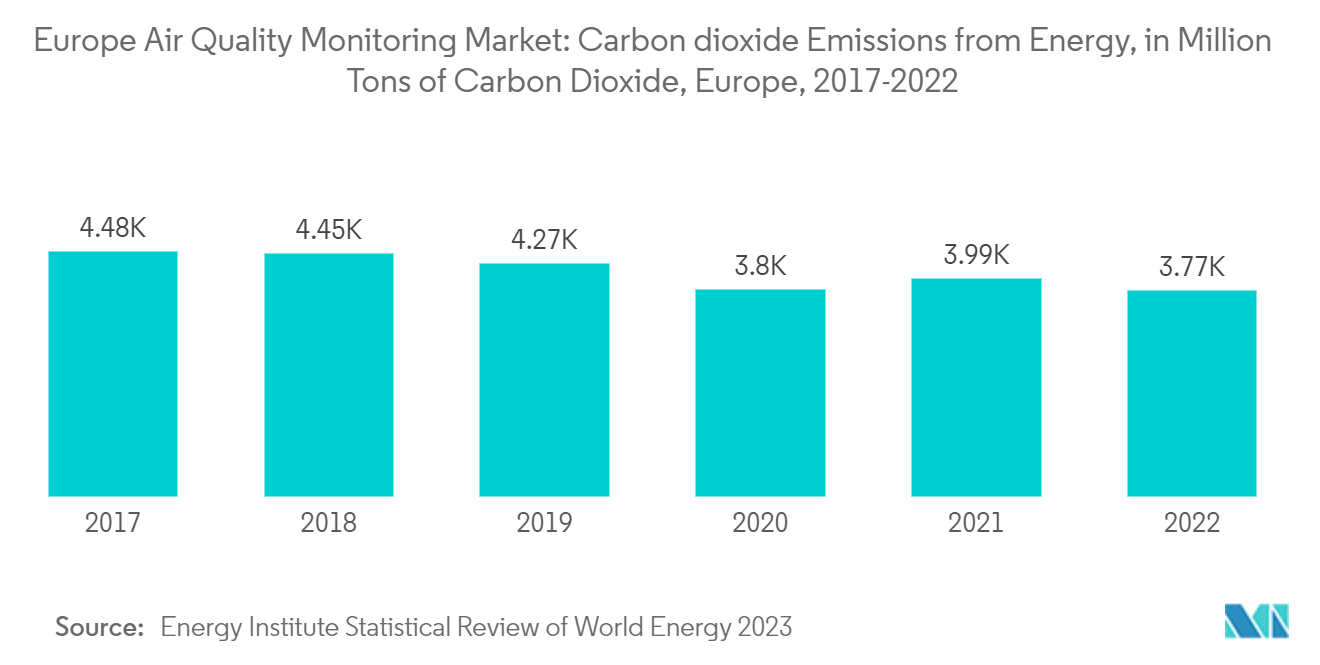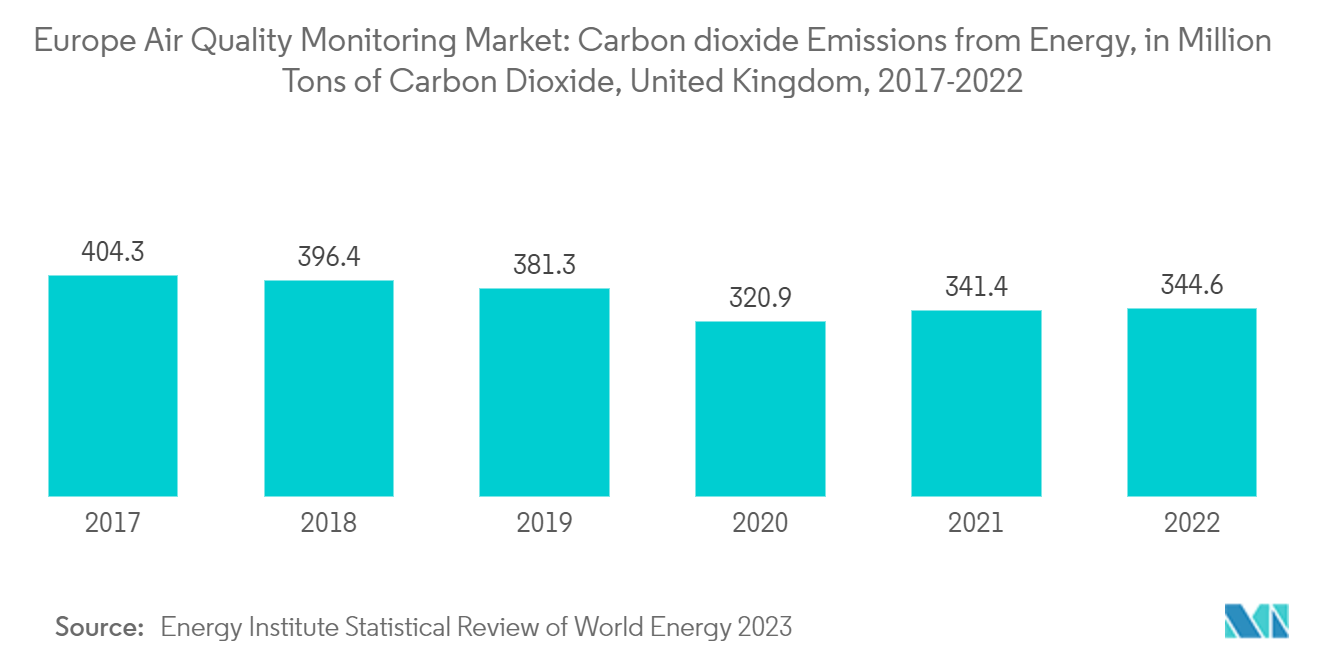Market Trends of Europe Air Quality Monitoring Industry
Continuous Type to dominate the market
- Automatic or continuous ambient air quality monitoring stations (CAAQMS) can monitor pollutants using different analyzers, reducing the chances of manual error, generating data at time intervals of minutes, and transmitting the data while minimizing manual intervention. These systems comprise sampling, conditioning, and analytical components and software designed to provide direct, real-time, continuous pollution measurements by analyzing representative sample(s) of air.
- Due to their real-time measurement capabilities, these systems are typically installed at places with a high level of air pollution for dynamic air quality monitoring. Therefore, these systems have been traditionally used for air quality monitoring around industrial facilities to measure the dynamic levels of industrial air pollutants such as SOx, NOx, COx, and particulates (mostly PM2.5 and PM10). Most continuous air monitoring programs require simultaneous monitoring of meteorological conditions because these parameters influence local and regional air quality.
- In developed economies like those in Europe, air quality has become an increasingly significant parameter for safeguarding social health. Hence, these countries have enacted strict Health, Safety, Security, and Environment (HSSE) regulations in building and industrial construction, which, in turn, has led to the growth in demand for indoor air quality monitoring systems to ensure compliance.
- The rise in the construction of smart buildings across Europe has led to a surge in demand for continuous indoor air quality monitoring systems coupled with Internet of Things (IoT) systems. These systems can dynamically alert the owners about prospective air quality issues, with indoor continuous air quality monitoring systems installed in commercial spaces, offices, and schools.
- Air pollution is a growing health concern in Europe. According to the European Environmental Agency (EEA), more than 90% of the urban population in the European Union (EU) were exposed to fine particulate matter levels above the guideline level set by the World Health Organization (WHO). Further, exposure to concentrations of fine particulate matter above the 2021 WHO guideline resulted in more than 230,000 premature deaths in the EU-27 region. The region's primary sources of air pollution come from burning fossil fuels in energy, transport, households, and industrial and agricultural activities.
- In 2022, the energy sector was the most polluting in Europe, emitting roughly 3769.8 million tonnes of carbon dioxide equivalents of carbon dioxide.
- Unlike other markets that were negatively impacted due to the global recession triggered by the COVID-19 pandemic, the air quality equipment and monitoring markets have grown considerably. As the SARS-2 coronavirus is an airborne virus, concerns about infections caused by indoor viral pollution in constrained spaces have led to the developing and deploying advanced anti-viral air monitoring and treatment systems to reduce the chances of contagion. This has led to explosive growth in demand for specialized continuous indoor air quality monitoring systems.

United Kingdom to have a Significant share in the market
- The United Kingdom is widely recognized for having one of the most comprehensive air quality monitoring programs in the European Union. in April 2023, A new round of Air Quality Grants for local administrations was opened to aid communities and lessen the impact of polluted air on people's health in the United Kingdom. Local administrations across England can now apply for a share of USD 7.61 million of the government budget to provide projects to enhance air quality.
- The annual Air Quality Grant permits councils to develop and execute measures to benefit businesses, schools, and communities and lessen the impact of air pollution on people's health. Since 2010, more than USD 67.19 million has been awarded across more than five hundred projects through the scheme.
- The budget will be prioritized towards projects that tackle particulate matter, enhance public understanding of the effects of air pollution, and help local authorities bring down levels of nitrogen oxide (NO2) and other pollutants below legal limits. Thus, such initiatives by the government are likely to increase demand for air quality monitoring systems during the forecast period.
- Around 300 environment agency-managed monitoring sites across the United Kingdom monitor air quality, and these are organized into networks that gather a particular kind of information using a particular method. The pollutants measured and the method used by each network depends upon the reason for setting up the network and what the data are to be used for.
- In 2022, the energy sector was one of the most polluting in the United Kingdom, emitting roughly 344.6 million tonnes of carbon dioxide equivalents of carbon dioxide. The network that monitors concentrations of the most well-known pollutants is called the Automatic Urban and Rural Network (AURN), which reports data hourly in near real-time.
- The United Kingdom has strict guidelines and a widespread monitoring network, and these factors are expected to drive the market's growth during the forecast period.


